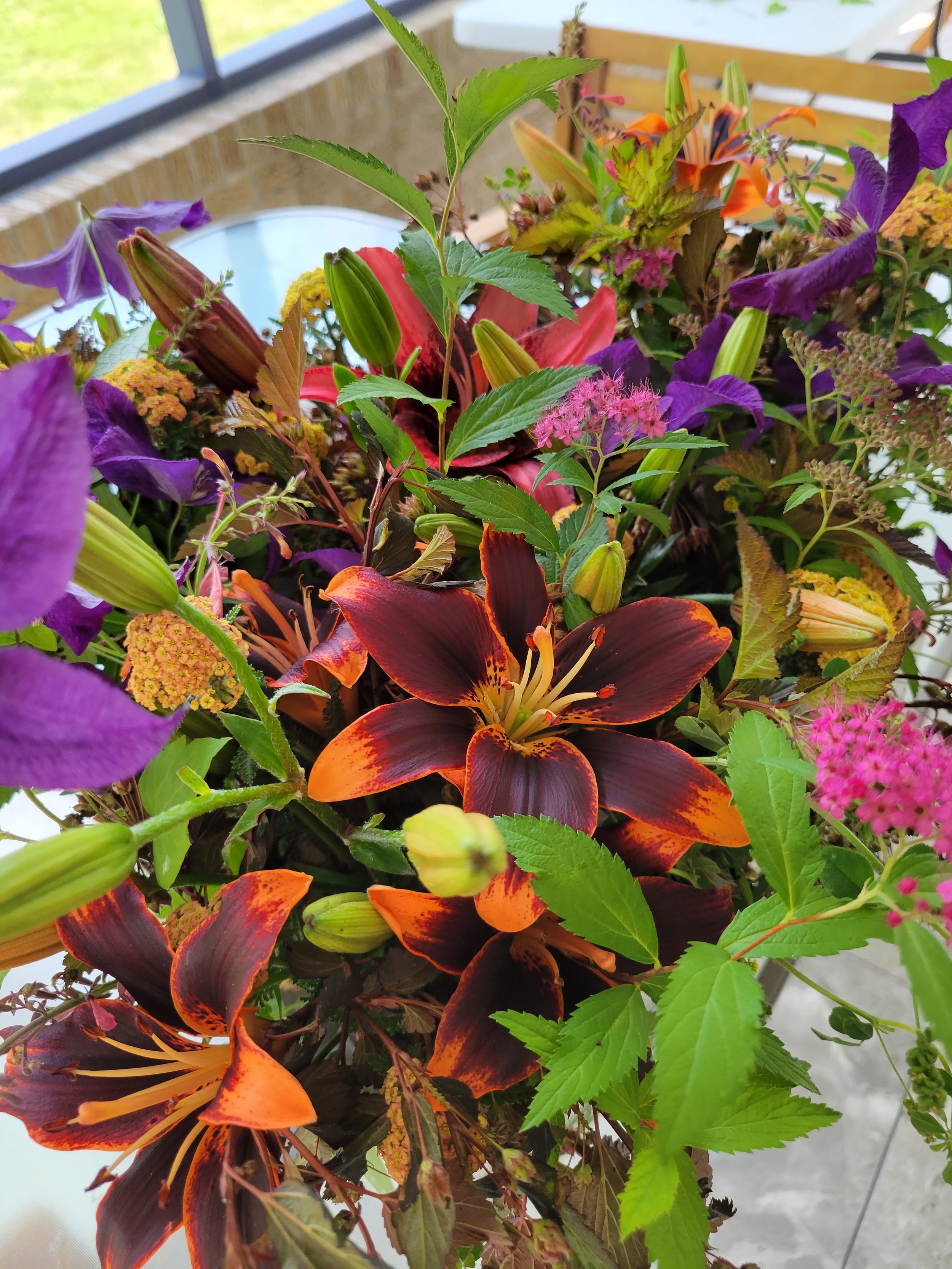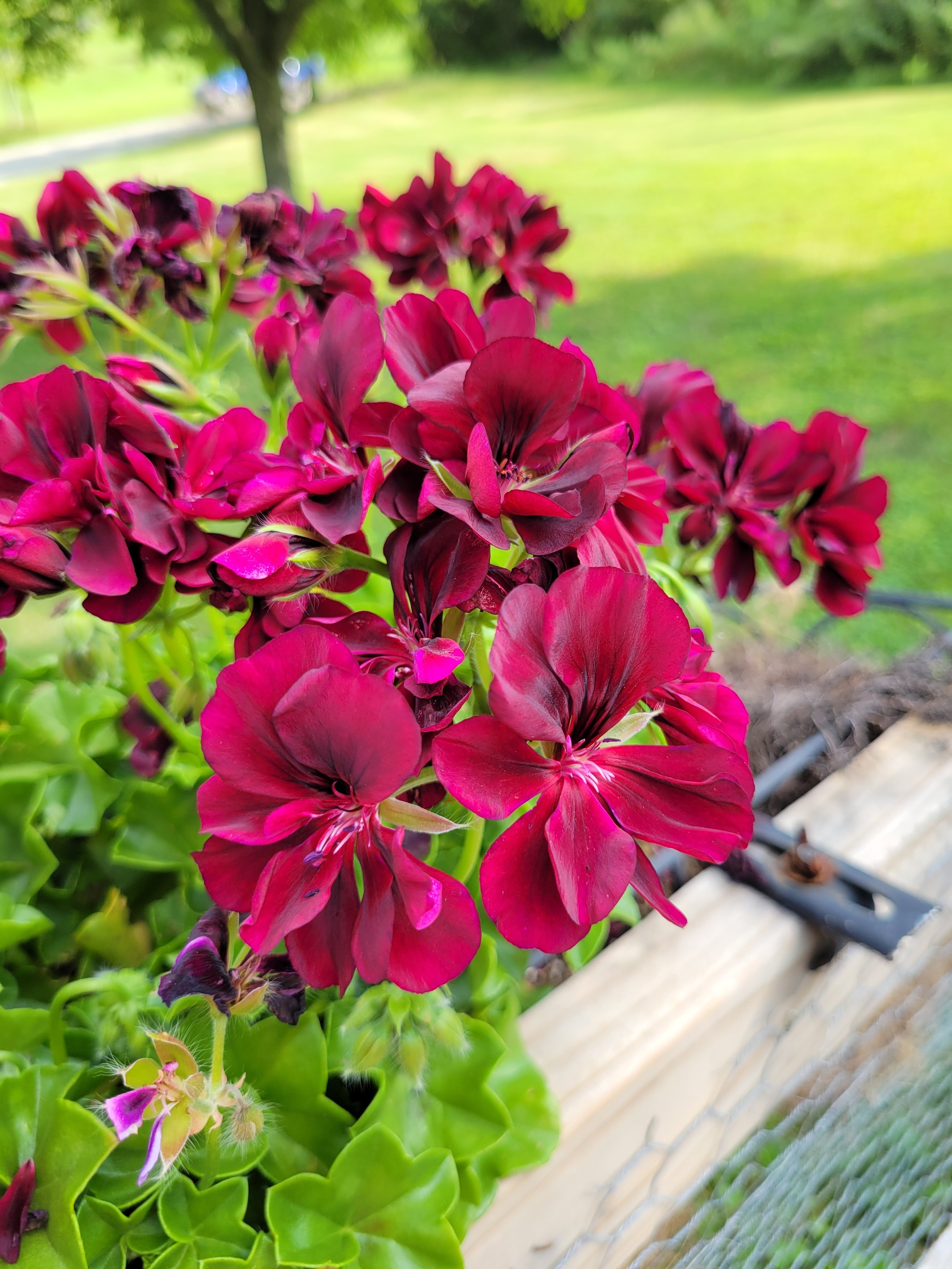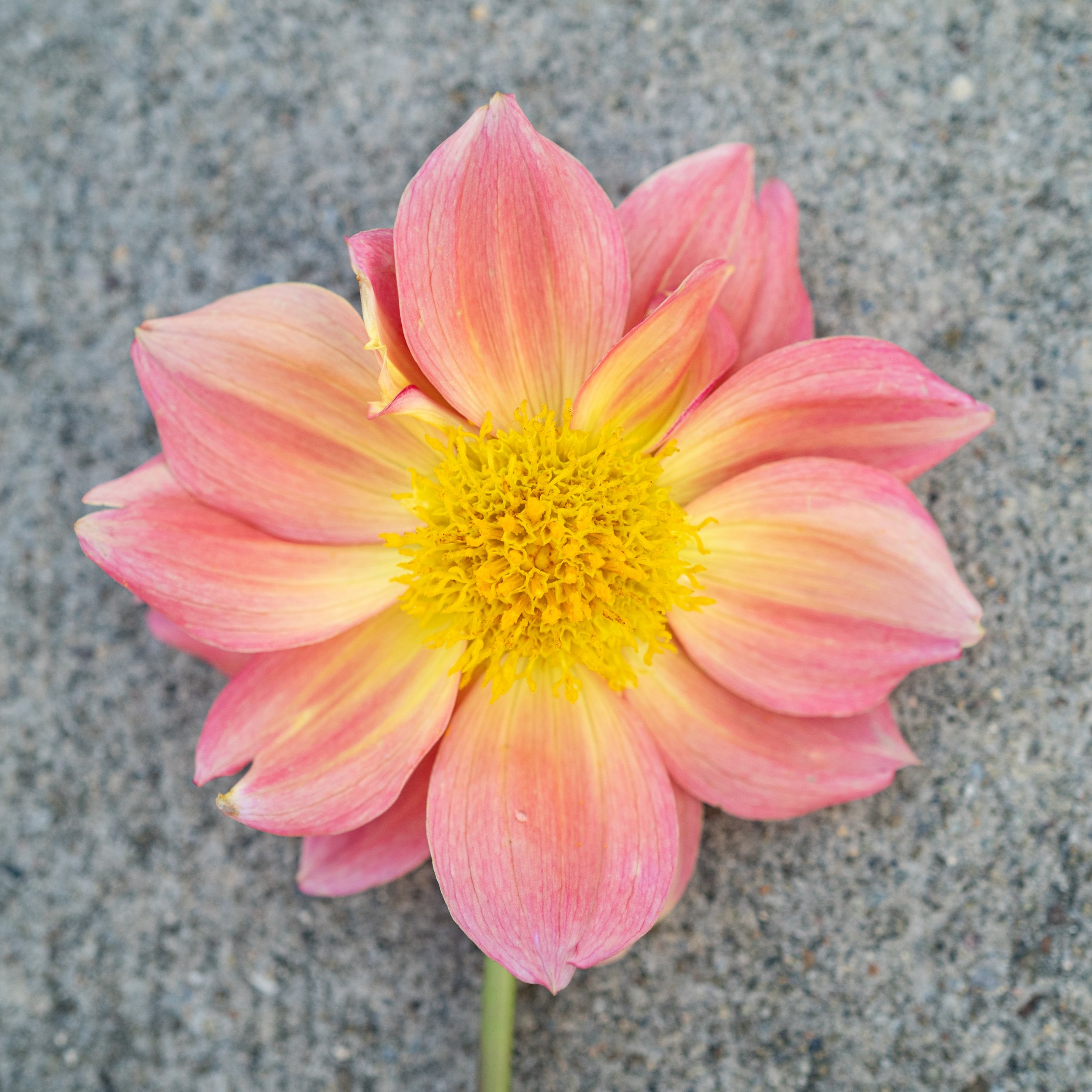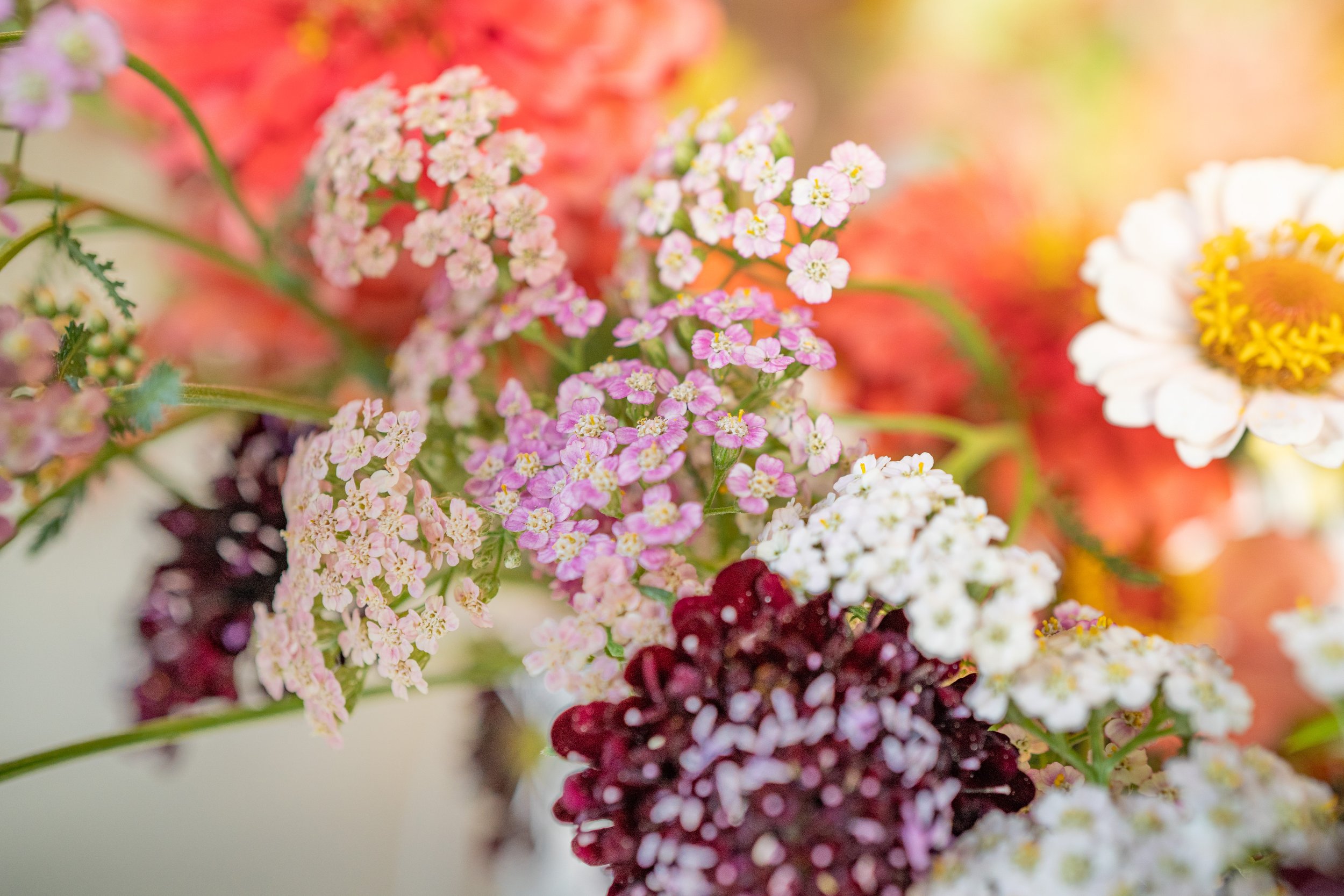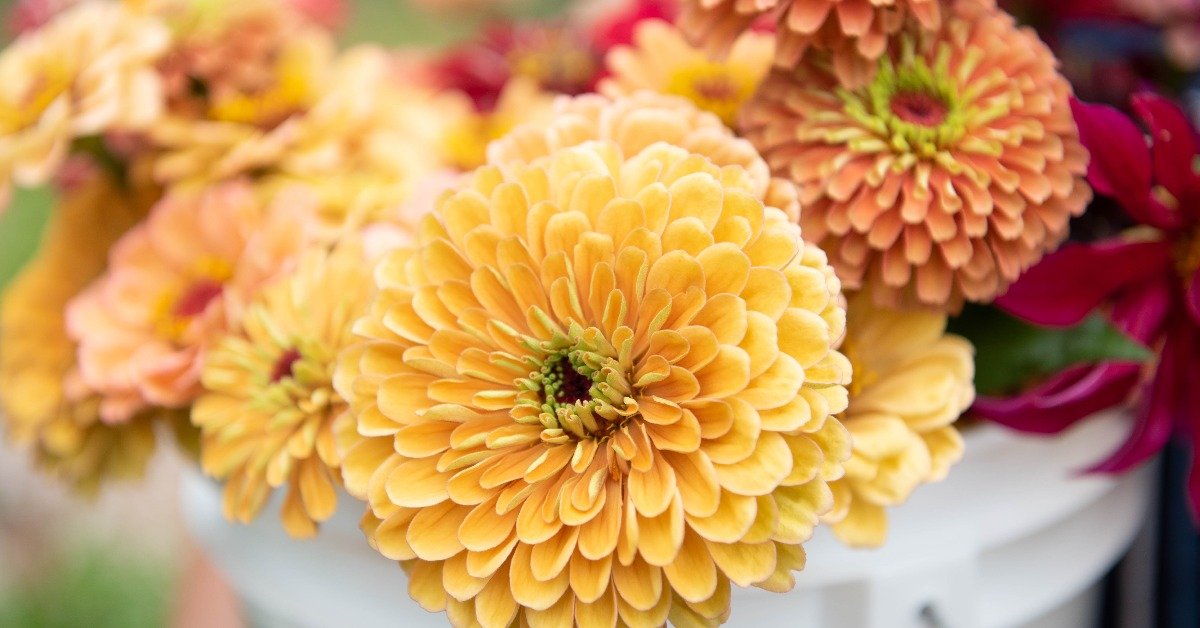How to Create a Solid Business Plan for Your Flower Farm
So, you want to start a flower business. You have a name picked out, you know you want to sell flowers, but maybe you're a little unsure how to get started. Don't panic!
A new business startup can be an overwhelming and confusing process. But there is one key thing you can do at the very beginning of starting your business that will not only help you get organized, but will also set you up for success in your first year and all the years that follow.
That key ingredient is a solid flower farming business plan.
Creating a florist business plan is essential in establishing a foundation of success.
What is a business plan?
A business plan is a written document that outlines what your company does and how it operates.
Essentially, it’s a roadmap for your business that helps you accomplish your business goals.
Developing a solid flower farming business plan takes time, patience, and a willingness to scrap and start over.
However, the time invested in developing your business plan is absolutely worth it, especially when the insanity of the flower world comes closing in and you need something to help you refocus in the middle of the chaos.
Why is a flower farming business plan so important?
For starters, a plan gives some structure and organization to your business, especially in the startup phase, and helps you determine your goals.
A business plan also helps you develop your target market and what you're selling. It will keep you on track financially too. Business plans can also be used to apply for funding or find potential business partners.
Sound overwhelming? It can be hard to know where to start when developing a flower farming business plan. There are many online templates and even services that will help develop your plan for you. Though, many of these are geared toward bigger companies with many products and employees and large amounts of financial data.
And if you're like me, you are probably starting your flower business with only a couple of products and one employee (you).
“It can be hard to know where to start when developing a flower farming business plan. ”
In the sections below, I share some information on how I created my business plan from a small-scale flower farming perspective. Keep in mind that there is no set template for a business plan, and you can make yours however you see best.
Also, business plans can and should be fluid as your business grows or your goals change. But hopefully, this article can help you understand the most important aspects of a business plan and help you start writing your own.
My floral business plan is broken into the following sections—and I will go into more detail on each of them in the following paragraphs:
Company Description
Products and Services
Marketing Plan
Operations Plan
Financial Plan
Company Description
This section in your plan should start by listing your company name and the date it was founded.
You can also mention your legal structure (sole proprietorship, LLC, etc.) and why you chose that structure.
Then it should include your mission statement. Why does your company exist? What does your company value? This can be hard to develop, so a helpful exercise is to write down what comes to mind when you think about your flower business.
You might write things like "beauty" and "happiness," but also try to think a little deeper about why you want to start your flower business in the first place.
“My mission for my business became that I wanted to provide my customers with sustainably and locally grown flowers.”
For me, I kept coming back to "sustainable" and "local" because those are two things I really value. So my mission for my business became that I wanted to provide my customers with sustainably and locally grown flowers.
This section of your floral business plan should also briefly touch on what products or services you are planning to sell.
You will go into more detail on this in your Products and Services section, but providing a short description of what you intend to sell will give the reader context for your business operations and your goals.
Your business plans should include several sections, including goals—both short and long term.
The next part of this section should list your short-term and long-term business goals.
This section is essential because it defines how you want your business to grow and progress.
Setting goals also forces you to focus on what you want to get out of your business. Goals should follow the SMART principle:
Specific: Define a clear, specific goal.
Measurable: Give yourself the ability to track your progress by determining a metric you want to hit.
Attainable: Be realistic. Think about your constraints (budget, time, etc.) and make sure you can realistically hit your goal.
Relevant: Make sure your goal aligns with your mission and your values.
Time-based: Give yourself a timeline for achieving your goal to encourage yourself to stay motivated.
Here are a few examples of SMART goals that are relevant to a flower farming business:
I will have 3 contracts with local florists in place by the end of year 4.
I will save $3500 of my net profits to fund the construction of a greenhouse in April 2023.
I will sell 30 bouquet subscriptions during my first year of business.
Remember that your flower farming business plan is fluid, and your goals will change as your company grows. Visit this section of your business plan often—not only to keep yourself moving toward your goals, but also to determine if you want to set new goals as your business grows.
You should also write briefly on your industry and target market in this section, but you will have an opportunity to go into more detail on these items in your Marketing Plan section.
Discuss if your industry is growing or stable and how you will take advantage of the available market space. How will you be competitive? What sets you apart?
You can always come back to this section of your company description after you've done the research to develop your Marketing Plan, which we will talk more about later.
Products and Services
In this section of your flower farming business plan, you’ll go into detail on what products or services you will sell.
It might sound simple (flowers—duh), but how exactly will you sell those flowers? Will you sell wholesale to florists? Are you going to create your own bouquets to sell yourself or at a place like a farmer's market? Will you offer other floral services like wedding work or host flower-arranging workshops?
List each product or service, and then describe how that product will be created or how the service will be executed.
For the bouquet subscriptions I offered during my first year in business, I listed the following:
How often each bouquet would be offered (weekly)
How the bouquet would reach my customers (delivery)
How long the subscription would run (6 weeks)
How many stems would be in each bouquet (20 stems)
What the bouquets would be transported in (mason jars)
How far I was willing to travel to deliver the bouquets (30 miles)
The last piece of this section is to list each product or service's price and briefly describe how that price was determined.
“List each product or service, and then describe how that product will be created or how the service will be executed. ”
I find it helpful to come back to this piece after completing the Marketing Plan section, where you will research your target market and your local competitors, and the Financial Plan section, where you will set your budget and profit goals.
Knowing your competition will inform your business decisions.
Marketing Plan
This section is where the bulk of your research will be done, and I think it is best to complete this section pretty early in creating your business plan.
Chances are, if you've decided to start a flower-farming business, you already know a little about the flower-farming industry.
However, you should still do some in-depth market research to truly understand the industry and what you are getting into.
Overall, the demand for locally grown flowers is increasing, but what is the demand like in your local area, or within your target market?
If you are planning to supply to local florists, research the latest trends in floral design to understand what their needs and demands are like.
Researching your local competition is an important part of your marketing plan and will also help you determine current demand in your area.
If there are well-established flower farms in your area, check out their website or social media pages to see what products and services they are offering and what their prices are like.
This will help you determine whether you can be competitive with your products and what price you should set for those products to get a portion of the market share.
“You should view your other local flower professionals as an opportunity for collaboration and learning. ”
Something important to remember is that, although we use the word competitor in the context of target markets and business planning, you should view your other local flower professionals as an opportunity for collaboration and learning.
The flower-farming industry is open and welcoming. It is full of valuable knowledge that you will miss out on if you close yourself off and treat your other local businesses as competition.
When you start your own flower farming or floral design business, reach out to other local flower farms or floral professionals on social media or even in person. I can almost guarantee you will find a network of fantastic, like-minded people willing to collaborate and share ideas.
Back to your Marketing Plan, though—you should also list the risks associated with your business and product offerings. What could happen that would keep you from reaching your goals?
Unfortunately, in an industry that relies heavily on mother nature, a lot can go wrong. Disease, pests, and extreme weather are all major risks.
Burnout is another risk. Farming is hard work with long days, especially if you launch your flower business as a side-hustle to a typical day job. How will you overcome the challenges associated with these risks?
We will talk more about risk mitigation in our Operations Plan, but listing your potential roadblocks in your business plan and thinking ahead of time about how you will address them will help you be prepared when they inevitably occur.
Lastly, your Marketing Plan should also describe your target customer:
Who do you think will buy your product?
Where will they want to shop for it?
Do you need an in-person location, or can you just open up an online store?
How will your advertising reach them?
Will social media pages be sufficient to reach your target customer, or will you need a website or an ad in the local paper?
Your Marketing Plan is a crucial piece of your business plan that will help you determine what you are selling, who you are selling to, and how much you can anticipate selling.
The next section, your Operations Plan, will determine how you make your product and operate your business.
You’ll also need to detail out how your business will operate to accomplish your goals.
Operations Plan
In this section, you should outline how your business will operate on a day-to-day basis. Start by describing how you will produce your product.
What kind of supplies and equipment will you need to create your product from start to finish?
In the flower production industry, this is everything you will need to start seeds, support growing seedlings, create an outdoor environment where your plants will thrive, harvest healthy flowers, and create your final product.
It also includes what you will do in the off-season to continue supporting your business. Thinking through the entire growing process—and really what an entire year looks like for your flower farming business—will help you spot potential hiccups in the process.
Listing out the necessary supplies and equipment to accomplish your operations will also help you develop a budget for your Financial Plan section of your business plan.
For my bouquet subscriptions, my list looked something like this:
Seed starting supplies: Seeds, seed trays, grow lights, heat mats, seed starting mix, vermiculite
Preparation of outdoor growing space: Compost, soil additives, tiller, landscape fabric, gardening gloves, shovels
Supporting healthy plants: Hoses, drip irrigation system, fertilizer, Neem oil for disease and pest control, backpack sprayer, support stakes, trellises, netting
Flower harvesting: Snips, pruners, buckets and vessels, flower preservative
Bouquet creation: Rubber bands, mason jars, paint, stickers, kraft paper
When you list these items, you should include what you anticipate being able to reuse and what will need to be purchased new each year.
If you have certain suppliers in mind, create a section to list your suppliers and their contact information.
Next, you should think about what else will be required to run your flower business.
Some things to consider include:
Will you need to buy/rent a brick-and-mortar space to sell your product? How will you maintain this space on a daily basis?
Will you need to create and maintain a website and online store? How often do you plan to update your webpage?
Will you have social media pages, and how will you manage posting to those pages? How often do you plan to post new content?
How will you track your expenses and your income?
How will you deliver your products or services?
Will you require help from others? How will they be compensated?
Lastly, think about the risks you outlined in your Marketing Plan. What can you do in your day-to-day operations to mitigate those potential risks?
For example, I planned to mitigate the risk of disease and pest damage by implementing weekly applications of Neem oil to my plants.
Don’t forget to create a financial plan! Budgeting is vital.
Financial Plan
The last section of your flower farming business plan should cover the financial aspect of your business.
Many finance terms and confusing references to different "projections" and other phrases can surface when you start looking at the nitty-gritty of financial planning.
I have never had the brain to understand the deep world of finance, so reading about these terms made me feel completely overwhelmed. However, I do understand the importance of budgeting and that money management is the most critical factor in running a successful business.
So I pushed aside all those confusing terms and just started with the basics of creating a budget: expenses vs. income. I encourage you to start the same way. You can always return to this section and add more detail as your business grows and you have access to more financial data.
Luckily for you, by developing the other sections of your business plan, you've already done the bulk of the work for estimating your expenses and projected income.
Take a look at the lists you made in your Operations Plan for the supplies and equipment that will be required to operate your business. These are your anticipated expenses.
Then circle back to your Products and Services section, along with your Marketing Plan. What are you planning to sell, how much of that product are you planning to sell, and at what price? This is your projected income.
Your total projected income minus your total projected expenses result in your net profit. Look at this number—how does it align with your goals? Are you just breaking even, or is your profit enough to cover that greenhouse you wanted to fund?
If this number does not allow you to achieve your goals or encourage sustainable business growth, where can you make adjustments to the rest of your business plan?
“It’s vital to be patient and take the time to set yourself and your business up for financial success. ”
Should you charge more for your product or try to sell a larger volume to increase your income? Can you make any cuts in your spending to bring your total expenses down? If you can't make changes to either of those, you may need to adjust your goals to be more attainable.
This part of your business plan development can be frustrating, but don't be afraid to be flexible and make changes. It can also be helpful to work through this portion with an accountant. They can also help you navigate the tricky tax laws that you will want to factor into your financial plan. It's vital to be patient and take the time to set yourself and your business up for financial success.
What’s next after creating your flower farming business plan?
Now that you've made it through every section of your new business plan, read through it all again.
Is there anything you missed in your research or in listing out your day-to-day operations? Do you still feel strongly about your goals? It's okay to make changes until you feel like you've got it all right.
After your first year of operation, and every year after that, revisit your business plan and make any necessary changes to it to continue reaching your goals and growing your business.
Remember that this is your business, your goals, and your dream. Create a plan that fits you and your values. Stick to your plan, and set yourself up for success. And don't forget to have fun and enjoy the ride!



